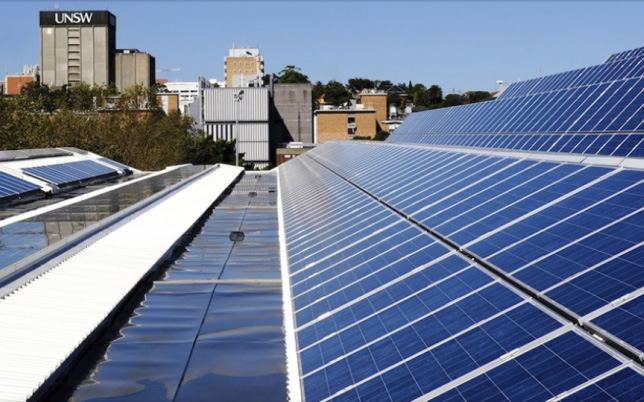Solar research funding to drive costs lower
Australian solar energy research is already world-leading, but our ambition is to create Ultra Low Cost Solar to accelerate the transition to renewables.

Thirteen research projects will receive a combined $41.5 million in funding to support activities that aim to significantly reduce the cost of solar.
Australian researchers regularly break world records for solar efficiency, and technology developed here is the basis for a majority of the world’s solar panels.
ARENA’s latest round of funding focuses on delivering Ultra Low Cost Solar (ULCS). That is, solar generated at about one quarter of the current price.
The target is called ‘Solar 30 30 30’. It aims to improve solar cell efficiency to 30 per cent and reduce the cost to 30 cents per watt, fully installed in the field. The target date is 2030.
Currently, efficiency records stand just below 27 per cent, while the installed cost is around $1.20 per watt.
ARENA CEO Darren Miller said the funding will go to some of Australia’s leading universities and researchers.
“Australia’s researchers have helped to make solar PV the cheapest form of energy in history,” Mr Miller said.
“But to create a future in which Australian solar energy supplies the world with clean power, fuels and products, we need to be ambitious and drive the cost even lower,” he said.
Backing Australian researchers
ARENA has awarded funding to researchers from three Australian universities: The University of New South Wales (UNSW), The Australian National University (ANU) and The University of Sydney (USYD).
Applications initially opened in February 2022 for $40 million funding. ARENA later added a further $1.5 million due to the strength of that first round of applications.
Successful applicants showed potential to reduce levelised solar PV costs and improve cell and module efficiency across two streams.
Stream 1 – Cells and Modules: Building on Australia’s leading track record of R&D and innovation in solar cells and modules ($27.5 million in ARENA funding);
Stream 2 – Balance of System, operations and maintenance: Seeking to broaden the approach to accelerate innovation that can drive down the upfront and ongoing costs of utility scale solar PV in the field ($14 million in ARENA funding).
Although much of the focus is on improving or developing new technology, there is also support for commercialisation beyond each project’s core research and development phase. With the ambitious 2030 target in mind, the funding includes assistance to develop products that can be offered into the market at scale.
“ARENA is supporting these universities to get behind the target of ‘Solar 30 30 30’, helping to optimise Australia’s transition to renewable electricity and achieve our emissions reduction targets,” Mr Miller said.
Accelerate worldwide development
Since 2012, ARENA through its R&D programs has committed $118.5 million in grant funding to 145 solar PV projects with 17 institutions.
ARENA last year boosted its funding support to the Australian Centre for Advanced Photovoltaics (ACAP) by $45 million. By 2030, ACAP will have received an expected total of $128.99 million in funding since 2012.
ACAP has fostered the spin-out of Australian solar start-ups such as Open Instruments, Solar Vision, Solar Cycle and SunDrive.
Professor Anita Ho-Baillie, the John Hooke Chair of Nanoscience in the University of Sydney’s School of Physics and Sydney Nano Hub, welcomed support for the university’s collaboration with SunDrive.
“Thanks to the support of ARENA, we are thrilled to be able to work with SunDrive to accelerate the development of perovskite-silicon tandems for commercialisation,” she said.
Deputy Head of School (Research) at the School of Photovoltaic and Renewable Energy Engineering UNSW Sydney Professor Bram Hoex, said he was humbled by the strong support from ARENA.
“ARENA’s ‘Solar 30 30 30’ target is perfectly aligned with our mission to accelerate the worldwide development and adaptation of renewable energy,” he said.
“This funding will allow us to continue to be in the driver’s seat of technology development and commercialisation with an increased focus on utility-scale solar, and so driving down emissions and growing the Australian economy at the same time.”
LIKE THIS STORY? SIGN UP TO OUR NEWSLETTER

ARENA